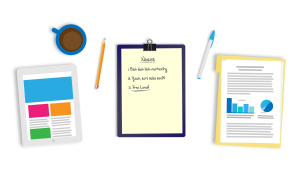When it comes to building web applications, there are many different approaches and frameworks to choose from. Figuring the best fit for your project can be overwhelming. In this article, we’ll review some of the best web application design tips. We will also go through the best design approach to use with references. We’ll also provide examples and resources for further reading. These would help you learn more about each design and decide which one is right for you. This article will provide a helpful overview of the best design options available which would help you choose the best approach for your project.
WHAT ARE WEB APPLICATION DESIGNS?

Web application designs are the frameworks and approaches used to build and organize web applications. Choosing the best web application design for a project is an important decision, because it will impact the overall structure, performance, and maintainability of the application.
There are many different design options to consider, each with its own strengths and weaknesses. We will review some designs and also give you the best web application design tips to stay ontop in 2023.
When choosing the best web application designs for your project, it’s important to consider the specific requirements and goals also. Furthermore to note as well are the skills and resources of the development team. It’s important to do your research and carefully evaluate the different options to determine which design is the best fit for your project.
7 BEST WEB APPLICATION DESIGN TIPS TO NOTE IN 2023
Prioritize usability:
The design of your web application should prioritize the user experience. This means making the interface easy to navigate, with clear and concise instructions and feedback.
Make it responsive:
With the proliferation of devices with different screen sizes, it’s important to ensure that your web application is responsive, meaning it adjusts to fit the screen size of the device it’s being viewed on.
Use clear and consistent branding:
Consistency in branding helps establish trust with users and makes your application feel cohesive. Use the same color scheme, font, and imagery throughout the application.
Optimize for performance:
Slow loading times can be a major turn-off for users. Make sure to optimize your web application for performance by using efficient code, compressing images, and by also using a content delivery network (CDN).
Include search functionality:
A search function can be a valuable tool for users to quickly find what they’re looking for within your application.
Use appropriate and high-quality graphics:
Use appropriate graphics that match the theme and purpose of your application, and make sure they are of high quality.
Test for compatibility:
Make sure to test your web application on different browsers and devices to ensure it functions properly.
By following these tips, you can design a web application that is user-friendly, responsive and performs well.
WEB DESIGN APPROACHES AND FRAMEWORKS TO USE (with references)
There are many design approaches and frameworks that you can employ when building web applications and here are a few examples with references:
Model-View-Controller (MVC) design pattern:
This is a widely-used design pattern for building web applications. It separates the application into three main components: the model, which represents the data and business logic. The view, which is responsible for
rendering the user interface, and also the controller, which handles input and communicates with the model and view.
References:
- “Design Patterns: Elements of Reusable Object-Oriented Software” by Erich Gamma, Richard Helm, Ralph Johnson, and John Vlissides
- “Head First Design Patterns” by Eric Freeman and Elisabeth Robson
Model-View-ViewModel (MVVM) design pattern:
This is a variation of the MVC pattern that is commonly used in web applications built with JavaScript frameworks, such as Angular and Knockout. It introduces the concept of a ViewModel, which acts as a mediator between the model and the view, providing a layer of abstraction that allows the view to bind to properties and commands on the ViewModel.
References:
- “Pro AngularJS” by Adam Freeman
- “Knockout.js: Building Dynamic Client-Side Web Applications” by Steven Sanderson
Microservices architecture:
This is a design approach that involves building a web application as a set of small, independent services that communicate with each other using APIs. Each service is designed to handle a specific task or set of related tasks, and they can be developed and deployed independently of each other.
References:
- “Building Microservices” by Sam Newman
- “Microservices Architecture” by Irakli Nadareishvili and Brian Mulloy
These design approaches and frameworks are just a few examples that can be used for building web applications. There are many other options to consider as well, depending on the specific requirements of your project. check out our previous post on web application tools every developer need.


